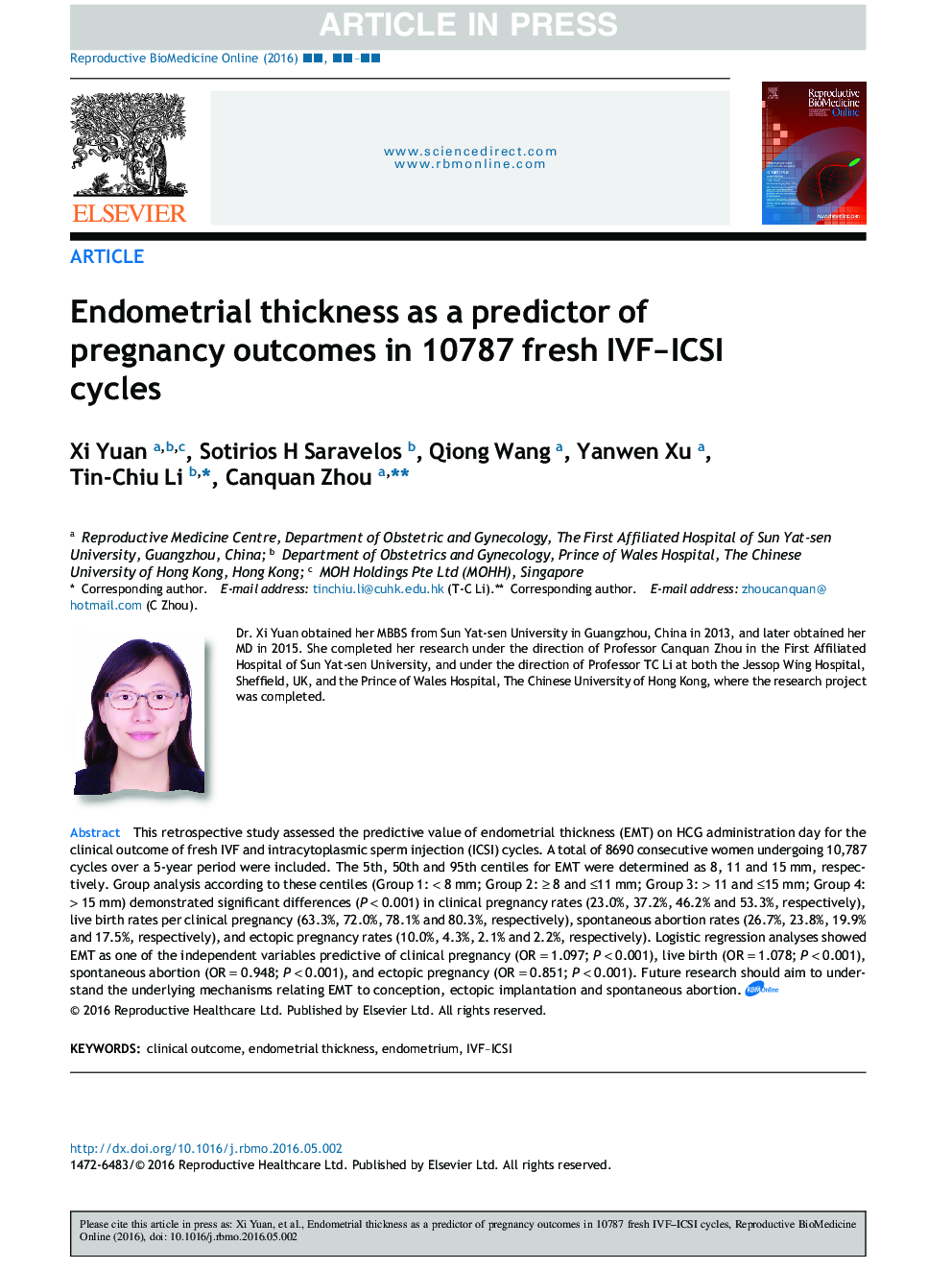| Article ID | Journal | Published Year | Pages | File Type |
|---|---|---|---|---|
| 6188580 | Reproductive BioMedicine Online | 2016 | 9 Pages |
Abstract
This retrospective study assessed the predictive value of endometrial thickness (EMT) on HCG administration day for the clinical outcome of fresh IVF and intracytoplasmic sperm injection (ICSI) cycles. A total of 8690 consecutive women undergoing 10,787 cycles over a 5-year period were included. The 5th, 50th and 95th centiles for EMT were determined as 8, 11 and 15âmm, respectively. Group analysis according to these centiles (Group 1: < 8âmm; Group 2: ⥠8 and â¤11âmm; Group 3: > 11 and â¤15âmm; Group 4: > 15âmm) demonstrated significant differences (P < 0.001) in clinical pregnancy rates (23.0%, 37.2%, 46.2% and 53.3%, respectively), live birth rates per clinical pregnancy (63.3%, 72.0%, 78.1% and 80.3%, respectively), spontaneous abortion rates (26.7%, 23.8%, 19.9% and 17.5%, respectively), and ectopic pregnancy rates (10.0%, 4.3%, 2.1% and 2.2%, respectively). Logistic regression analyses showed EMT as one of the independent variables predictive of clinical pregnancy (OR = 1.097; P < 0.001), live birth (OR = 1.078; P < 0.001), spontaneous abortion (OR = 0.948; P < 0.001), and ectopic pregnancy (OR = 0.851; P < 0.001). Future research should aim to understand the underlying mechanisms relating EMT to conception, ectopic implantation and spontaneous abortion.
Related Topics
Health Sciences
Medicine and Dentistry
Obstetrics, Gynecology and Women's Health
Authors
Xi Yuan, Sotirios H. Saravelos, Qiong Wang, Yanwen Xu, Tin-Chiu Li, Canquan Zhou,
